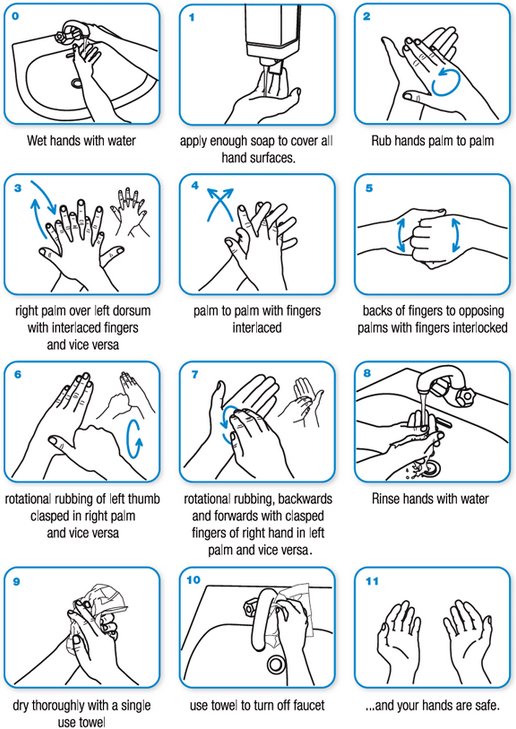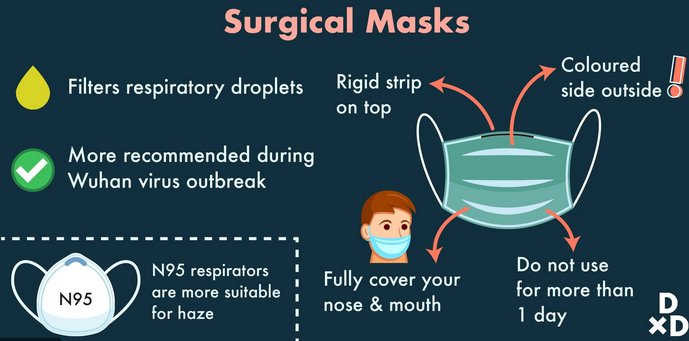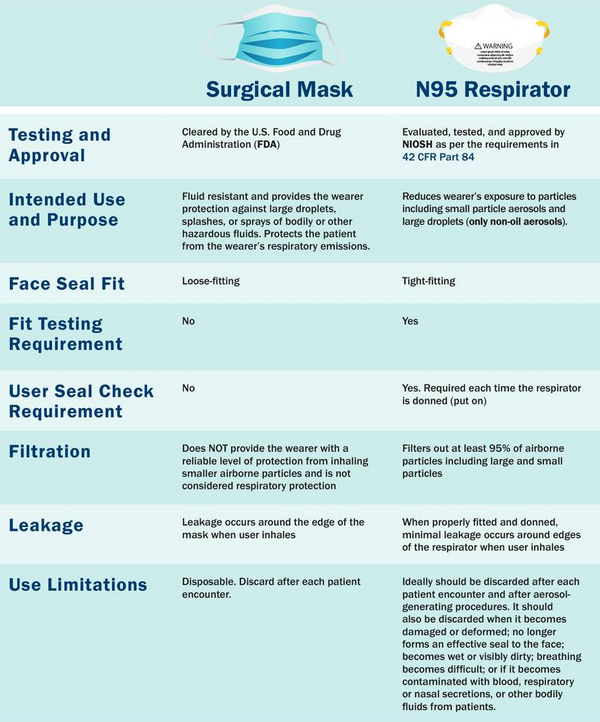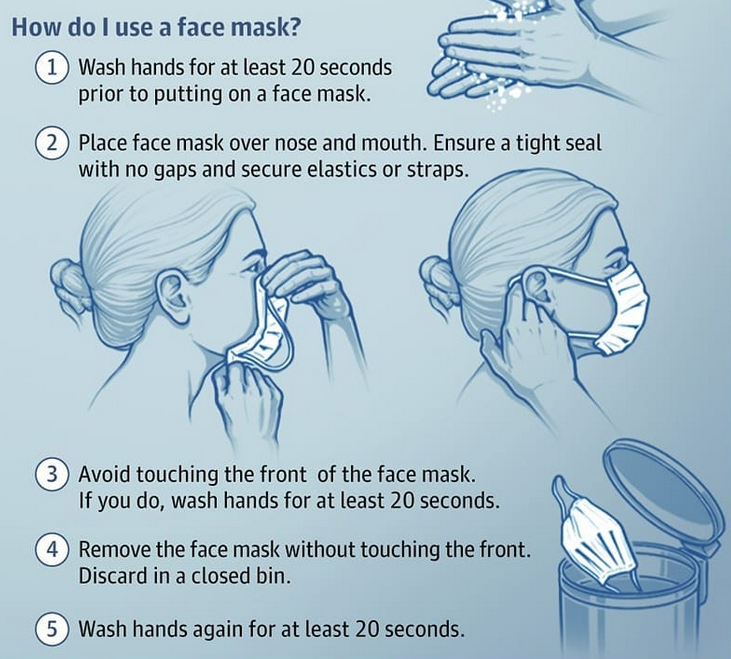Hand washing is one of the simplest, affordable, and effective means of preventing the spread of infection. Although tagged as basic preventative measures, still a lot of people don’t know how to wash their hands properly.
Much worse, there are people who don’t practice hand washing at all. The spread of infection and the current coronavirus 2019 (COVID-19) outbreak has called professionals and health enthusiasts to encourage everyone to practice the proper hand-washing technique.
By observing the proper hand washing method at all times, the transmission and spread of infection can be prevented. (1, 2)

Image 1: The image above shows the step by step proper hand washing technique.
Picture Source: who.int
Guidelines for proper handwashing technique.
National and Global Organizations such as the World Health Organization and the Center for Disease Control have come up with guidelines on the proper way to do hand washing. According to the World Health Organization, invisible germs can be killed by:
Hand sanitizers
Use a hand sanitizer or alcohol-containing at least 60% of alcohol. Rub the hands with alcohol or hand sanitizer for about 20 to 30 seconds making sure that the hands are rubbed back and forth, pay attention to the back of the hand and in between the fingers. (1)
Soap and water
This method is highly recommended when the germs are visible, especially when the hand is soiled with dirt. These are the steps for proper handwashing.
- Using clean water, wet both hands.
- Apply soap (with antibacterial property) to the hands making sure that the entire surface is covered with soap.
- Gently yet thoroughly rub the palms of the hands and pay special attention to the back of the hand and in-between the fingers and nails.
- Make sure that the back of the fingers and opposing palms with fingers are interlocked to thoroughly get rid of the dirt.
- Rub the left thumb to the right palm and vice versa to ensure that not a single dirt can escape.
- Once all the areas of the hands are covered with soap, the next step is to thoroughly rinse the hand with water.
- Dry the hands using a single-use towel.
- Turn of the faucet using the towel as holding the faucet with bare hands can harbor invisible germs. (2, 3, 4, and 5)
Center for Disease Control (CDC) Guidelines
According to the CDC, handwashing should protect everyone from the risk of contracting diseases. There are three basic handwashing rules – do it before, during, and after doing tasks such as:
- Wash your hands before, during, and after cooking.
- Wash your hands before and after eating.
- Wash your hands before and after treating wounds.
- Wash your hands after coming out of the toilet.
- Wash your hands before and after caring for a patient.
- Wash your hands after close contact with a wild animal.
The Center for Disease Control recommends these handwashing guidelines:
- Thoroughly wet your hands using clean running water.
- Apply soap and gently lather your hands front and back with special attention to the fingers and nails.
- Scrubbing of hands should be done for at least 20 seconds.
- Thoroughly rinse your hands using clean running water.
- Dry your hands with a clean towel. You can also dry them using an air dryer. (2,3, 4, and 5)
Hand washing preferred over hand sanitizing
Hand sanitizing can be done in the absence of soap and water. However, it is a must to know that sanitizers are only active when they’re on your hands. Applying alcohol and hand sanitizer could only give up to 75% protection.
Hand washing is better for cleaning off the dirt. If you get in contact with vomit, sputum, urine, and other nasty crap, you should wash your hands with soap and water as they clean better than hand sanitizers.
Hand washing – doing it the right way
The Center for Disease Control strongly suggests washing your hands for about 20 seconds. People on average wash their hands for only about six seconds. It is important to do hand washing the right way for doing it wrong isn’t going to prevent the spread of diseases.
- Wash your hands for at least 20 seconds – This is the amount of time needed to thoroughly wash all hand surfaces. While washing your hand, you could hum a happy birthday song twice as it is also equivalent to 20 seconds.
- Include your fingertips and the areas under the nails – Your hands get in contact with anything. The dirt and germs are confined in your fingertips and under the nails. So, make sure you cover those parts to thoroughly get rid of dirt and germs.
- Wash your hands after going to the bathroom, coughing, blowing your nose, sneezing, before eating, or after caring for a sick person – Washing your hands can protect you from the visible and invisible germs and dirt. (1, 2, 4, and 5)
How to handwash? With soap and water – source : WHO
Face Mask
Since the outbreak of coronavirus 2019 disease/COVID-19, people from all across the globe hoard facemasks. Currently, there is a shortage of facemasks both the typical surgical mask and N95 respirators.
This article provides a shed of light on who should really wear a mask and what type of mask should be work.

Image 2: A comparison image between a surgical mask and N95 mask.
Picture Source: cloudinary.com
Who should wear a mask?
- Patient with active infection – Not everyone is recommended to wear a mask. It should only be worn by people who have COVID-19, especially those symptomatic (showing symptoms of the disease). The purpose of the mask is not to protect yourself but to protect the people around you from contracting the infection.
- Health workers – Those in the medical field, especially the ones taking care of COVID-19 patients are required to wear a mask. (6, 7, and 8)
What type of mask should be worn?
There are two primary types of masks – surgical mask and N95 respirators. Which of the two should be worn?
- Surgical mask – it serves as a barrier but is not effective in filtering out minute particles. In the surgical setting, the surgical mask is worn by the surgeon and the member of the operating group to prevent contaminating the sterile environment. Is it effective for coronavirus? The answer is No. coronaviruses are very small and can easily pass through the surgical mask.
- N95 respirators – It is called N95 because it can filter up to 95% of microorganisms. It is worn by health care professionals who take care of a sick person with high impact respiratory pathogens such as in the case of coronavirus 2019 disease/COVID-19. It reduces the possibility of inhaling hazardous airborne particles including vapors or gases. (8, 9, and 10)
Difference between Face mask and N95 respirator
source : JAMA
Difference between Face mask and N95 respirator
Source : CDC
What can an N95 respirator filter?
It has the ability to filter out very small particles by up to 95%. It filters out both bacteria and viruses.
What to keep in mind when wearing N95 respirator?
- N95 respirators are only effective when it fits perfectly to the wearer. Therefore, the health worker should undergo a thorough evaluation to ensure that the mask fits just right. Wearing a loose or too tight N95 respirator might do more harm than god.
- You will know if the fitting is right as minimal leakage is visible around the edges of the mask especially when the wearer inhales. It simply indicates that the air is directed through the filter media.
N95 3M mask : How to Wear & Remove
Do face masks really work?
While a face mask provides a barrier, it is not an iron-clad assurance that you won’t get infected. The virus may transmit through the eyes and minute viral particles/aerosols may penetrate the mask.
One thing a mask is good at is capturing droplets – a primary mode of transmission of coronavirus 2019 disease.
It lessens the possibility of the disease being passed on to others. If you are exhibiting symptoms of COVID-19 or worse, diagnosed with COVID-19, you have to wear the recommended mask to contain the virus and protect the people around you. (6, 8, and 9)
Should you wear a mask, follow these steps:
- Wash your hands with soap and water before putting on the mask. If water and soap is not accessible, you can use alcohol and/or alcohol-based sanitizer.
- Cover your mouth and nose making sure there are no gaps between your face and the mask.
- While using the mask, you should refrain from touching it.
- Once the mask is damp, you have to replace it with a new one. Face masks regardless if they are surgical or N95 are designed to be used only once. They are single use and should be thrown away if they are already damp.
- When removing the mask, you have to remove it from behind and discard immediately in a closed bin. Make sure you do not touch the front part of the mask. Lastly, wash your hands. (7, 8, 9, and 10)
What to keep in mind?
Avoid panic buying. If you don’t have the infection, then there is no need for you to wear a mask. A face mask and N95 mask should only be worn by people diagnosed with COVID-19 and the people taking care of the sick. Hoarding mask both surgical mask and N95 will do no good.
In fact, you are indirectly contributing to the spread of infection as there will be no available mask for the sick and for the front liners – doctors, nurses, and allied healthcare members.
References
- https://www.cdc.gov/coronavirus/2019-ncov/community/index.html
- https://www.cdc.gov/coronavirus/2019-ncov/about/prevention.html
- https://www.theguardian.com/world/2020/mar/05/hygiene-measures-to-tackle-spread-of-covid-19
- https://www.who.int/emergencies/diseases/novel-coronavirus-2019/advice-for-public
- https://www.vox.com/2020/2/28/21157769/how-to-prevent-the-coronavirus
- https://www.who.int/emergencies/diseases/novel-coronavirus-2019/advice-for-public/when-and-how-to-use-masks
- https://www.theguardian.com/world/2020/mar/12/can-a-face-mask-stop-coronavirus-covid-19-facts-checked
- https://www.health.gov.au/resources/publications/coronavirus-covid-19-information-on-the-use-of-surgical-masks
- https://multco.us/novel-coronavirus-covid-19/masks-and-covid-19-what-you-should-know
- https://newsnetwork.mayoclinic.org/discussion/covid-19-when-should-you-wear-a-face-mask/



